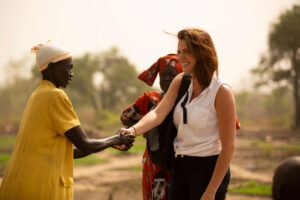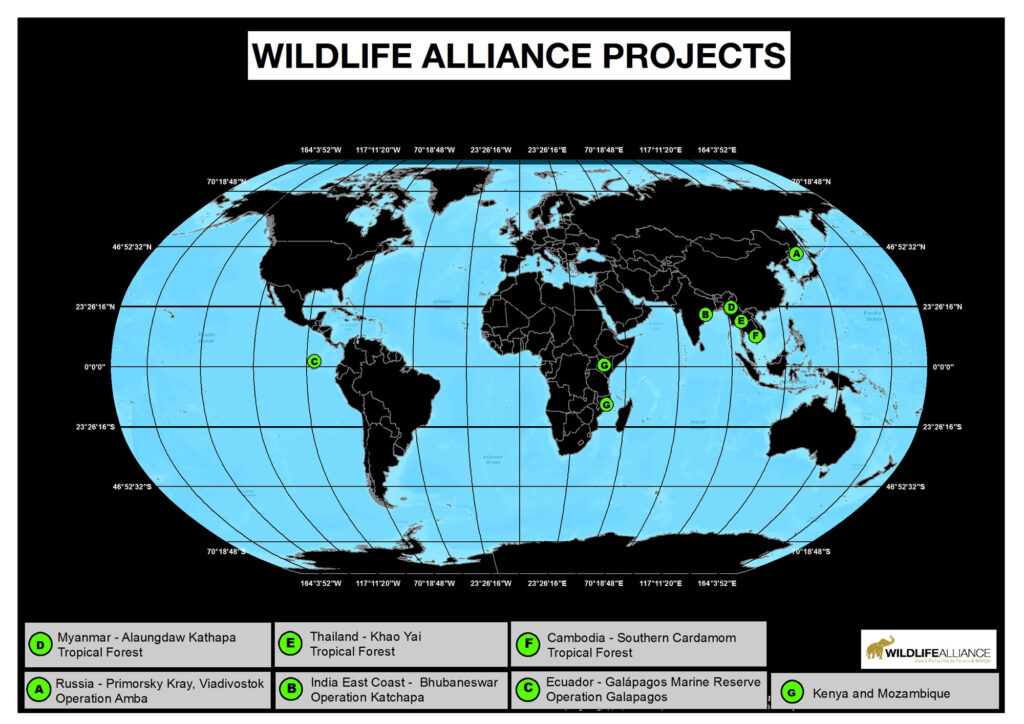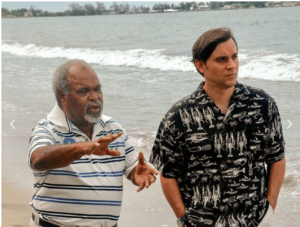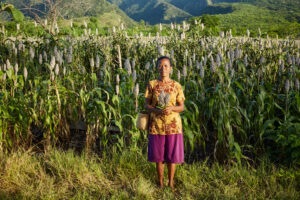
Obakki – A Purpose-Led Lifestyle Brand and Foundation
Founder Treana Peake, supports artisan partnerships and funds development work through the Obakki Foundation.
Southeast Asia
Grace Robinson December 10, 2020
Growing up in Brazil and Switzerland, Suwanna Gauntlett, environmentalist and conservationist, developed an appreciation for endangered wildlife conservation at a young age. An encounter with a captured and tortured wild jaguar would inspire her to pursue this appreciation into a career. Suwanna went on to pursue her undergraduate, master’s, and doctorate degrees, so that she could begin consulting for wildlife conservation organizations. After years working with various organizations to help an abundance of different wildlife, Suwanna created the Gauntlett Group, a pioneer in sustainable development that brought environmental management training to over 100 North American companies. Around this time, Suwanna also joined the Global Survival Network, which she helped to transition into Wildlife Alliance. Suwanna and her team recognized the flaws of traditional nature conservation and that many pre-existing organizations were not taking enough direct action to save the declining forests and wildlife.
Wildlife Alliance takes a direct, hands-on approach to nature conservation with their initiatives and programs. Specifically, Wildlife Alliance employs a Wildlife Rescue team to actively step in and combat poaching and illegal trade. The organization notes that forests and their wildlife are tied to a tight timeline, and a couple more years without action will result in their permanent demise. Wildlife Alliance is also passionate about educating future generations through their mobile education unit in Cambodia that teaches the value of environmental sustainability. With a dual concentration in direct action and an environmental curriculum, Wildlife Alliance is working vigorously to support sustainable development and empower countries to enforce wildlife regulations.
Mood of Living: Where did you grow up?
Suwanna Gauntlett: Brazil and in Switzerland
MoL: Where did you go to school? What did you study?
SG: I studied my French Baccalaureat at Lemania, Lausanne. Then got my Masters Degree in Theology at the University of Lausanne.
MoL: What inspired you to work with wildlife?
SG: When I was six and living in Brazil, I witnessed a captured wild jaguar being tortured by hunters. This formed my life goal of (1) freeing wild animals caught by poachers and (2) taking concrete action to protect the wild places where they live.
MoL: What led your passion for the environment and wildlife to develop into a career? What were your first projects? What parts of the world did these projects bring you to?
SG: My first projects included saving the Siberian Tiger from the brink of extinction (Russian Far-East) in 1994-2000 and stopping the slaughter of Olive Ridley Turtle along the Orissa Coast of India in 1998-2000.
MoL: What was your consulting firm “The Gauntlett Group”, and how was it a pioneer in sustainable development?
SG: Our mission was to assist corporations in reducing pollution and use of raw materials from the manufacturing stage to the product distribution stage. To reach this goal, we created the Environmental Management System (EMS) and trained hundreds of corporations. Our EMS became the precursor of the 14 001 Environmental Management System norm. I also produced a six-part training video called “The Road to Sustainable Development” for corporations to use in-house to implement EMS in all their departments.
MoL: How was Wildlife Alliance created? What is the mission of the organization?
SG: We were created in 1994 and incorporated in 1995 with our first name being Global Survival Network. We then changed our name to WildAid in 1999 and then to Wildlife Alliance in 2007. We created our organization because we saw the failure of traditional nature conservation that applies scientific studies of wildlife, filming wild places, writing reports, and conducting education.
Because traditional conservation organizations did not take action:
We saw biology scientists studying wildlife while these wildlife were being killed and while wild populations were being wiped out. Therefore, we created Wildlife Alliance to implement a direct, hands-on approach to nature conservation. Since 1994, we have conducted emergency interventions in the field to stop killings of wildlife and stop deforestation. We raised emergency funds, helped hire, equip and train park rangers, and coached them on-the-ground to uphold the law. We focused on developing countries that were motivated to save their wildlife and protect their national parks, but did not have the means nor the technical know-how to do this. Since the 1990’s, we are now focused on tropical countries because that is where the biggest density of biodiversity is located.
MoL: How would you describe your “direct action conservation” approach?
SG: Emergency interventions consisting in:
First step: Organizing the selection, hiring, training, equipment, infrastructure building for national park rangers that are weak in law enforcement (often national parks are only documents on paper, have no rangers at all, no ranger stations, no cars, nothing)
Second step: assisting local authorities and communities to conduct clear zoning and demarcation of community land where people can receive land titles and cultivate their crops versus clear demarcation of strictly protected forest zones where no development is allowed.
Third step: assisting poorest farmers to develop better crops and jobs so they no longer need to burn the forest and hunt the wildlife for survival.
MoL: How does the Wildlife Rapid Rescue Team work to ensure the safety of wildlife that are vulnerable to traffickers?
SG: The team acts similar to a wildlife police unit conducting raids and crack-downs on national roads and in cities. The unit seizes illegal shipments of wildlife being smuggled to neighboring countries where they will either be sold alive on wet markets, be used in traditional Chinese medicine, exploited inside tiny cages (over last 20 some years, we have saved over 150 smuggled bears on their way to bear-bile farms in Vietnam and China), or served in restaurants (often served alive on tables where they are spiced and boiled in front of customers with their tendons cut so they cannot not run away). The biggest challenge is to then provide care for the live animals that are seized from these shipments.
MoL: What are some of the major programs Wildlife Alliance has created? How are these programs helping to protect wildlife in various parts of the world?
SG: The attached map illustrates Wildlife Alliance’s projects. Unfortunately, we only operate in one country at a time, because of not-enough-funding.

MoL: Where do you live full-time?
SG: I live full-time in Cambodia
MoL: What future initiatives do you hope to pursue through Wildlife Alliance?
SG: Wildlife Alliance hopes to plan saving the elephants from extinction in Africa
MoL: How has COVID-19 impacted your work? How have you overcome the challenges brought by the pandemic?
SG: COVID-19 has severely impacted the 16 communities where we have worked hard with the people to help develop community-based ecotourism, which was very successful for several years. View chi-phat.org and areng-valley.org to know more. There has been a drastic loss of income due to zero international tourists since February 2020. Borders are quasi closed. Entrance is so very difficult now (tests at airports, deposits of funds at airports, expensive health insurance requirements, plus mandatory quarantine).
Photography courtesy of Wildlife Alliance

Founder Treana Peake, supports artisan partnerships and funds development work through the Obakki Foundation.

Executive Director Kevin Conrad is credited for his many initiatives through Coalition for Rainforest Nations that help unite and sustain rainforests around the world.

Global Greengrants Fund is a charitable foundation that supports grassroot causes to solve environmental harm and social injustice across the globe.